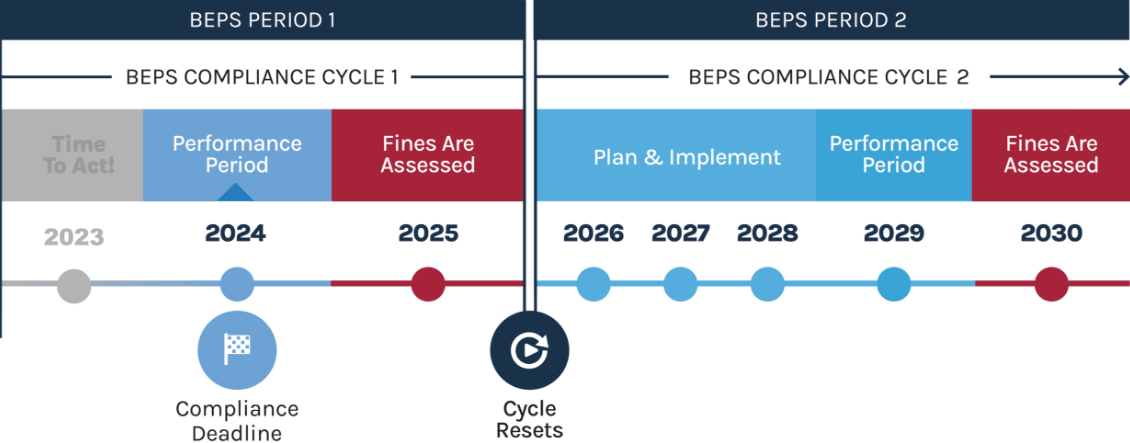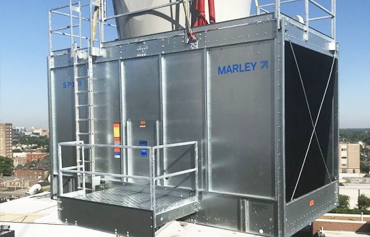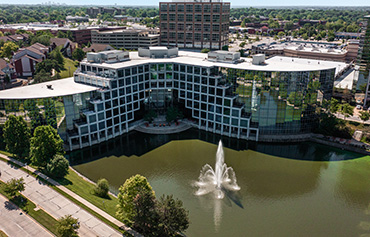Building Energy Performance Standard (BEPS)City of St. Louis Building Program
The BEPS verification year began on January 1, 2024. Contact Jarrell to see if your building is in compliance. The Building Energy Performance Standard requires almost all large buildings in the City of St. Louis to meet an annual energy usage target before the end of each program cycle or face potential fines, liens, and denial of permits.


CACP Process
If your property is eligible to apply for a CACP plan, you will need to complete an energy audit or retro-commissioning and submit the plan to the OBP for approval no later than June 1, 2024. If your plan is approved, the Jarrell team can work with you on completing the necessary steps to execute the plan and avoid penalty.
How can Jarrell help?
STEP1
Assess
- Benchmark your building
- Evaluate your need, opportunities, & options
- Initial analysis
- Set a target & choose a compliance path
STEP2
PLAN
- Assemble your team
- Develop a comprehensive plan
- HVAC, lighting, plumbing, envelope, behavioral
- Engage OPB for approval if needed
- Scope, price, savings, incentives & tax benefits
- Create systems to ensure ROI
STEP3
ACT
- Implement projects & behavior programs
- Secure incentives & tax benefits
- Put systems in place to ensure ROI
Frequently Asked Questions & Resources
- Greenhouse Gas Emissions
According to the U.S. Environmental Protection Agency (EPA), as much as 30% of energy used in buildings is wasted through inefficiency, and half of all energy savings are possible through low or no-cost improvements.
- Benchmark Reporting
Did you know that properties are required to report annual energy and water use? All reporting is to go through the Energy Start Portfolio Manager (PM) - learn more.
- Verification Year
Verification is required the second to last year of each compliance cycle. For most properties (excluding Qualified Affordable Housing and House of Worship) this will take place in 2024. Those who have achieved Energy Star Certification have verified that the data required has been achieved.
- How Energy Use is Calculated
The chief energy performance metric that both forms the basis for a property's Target and will determine compliance is their Weather Normalized Site Energy Use Intensity (EUI). Lower EUIs indicate higher energy efficiency and better building performance, while higher EUIs indicate the opposite. The goal of BEPS is for properties to make improvements that increase energy efficiency and reduce energy use as reflected in a lowering of their EUI.
- Baseline for Upcoming Cycle
A Baseline is the EUI for a chosen year that serves as a reference for measuring a property's improvement. Determining this reference point is commonly known as Benchmarking or setting a Benchmark. For the first compliance Cycle beginning in 2021 and effectively ending with the reporting deadline on May 1, 2025 (see Compliance Cycles and Timelines), the Baseline for each property shall be that property's EUI for calendar year 2018.
- Setting Targets
Targets are set by OBP with BEIB approval including when they are released at the beginning of each Cycle:
- Approximately 65% or more of properties will have a noncompliant EUI above the Target and must make improvements.
- Approximately 35% or less of properties will have a EUI that is already compliant by being below the Target.
- Compliance Cycles
Almost all properties will operate on 5-year Cycles, with effectively the first 3 years used to make improvements (and submit annual reports). Year 4 reporting is exclusively used to evaluate whether properties hit their Targets or achieved other performance goals for the Cycle. In Year 5, properties should simply maintain performance or plan improvements in anticipation of the next Cycle while OBP reevaluates the Targets.
- Steps Towards Compliance
- Double check to make sure your Benchmarking data is accurate and up-to-date in PM.
- Get an on-site energy audit to understand your building characteristics, equipment, and energy use. Not ready for a full energy audit? Try starting with an ENERGY STAR Treasure Hunt.
- Identify Energy Conservation Measures (ECMs). Use this Energy Efficiency Checklist to get started.
- Create an internal team to start your planning and implementation strategies.
- Develop a strategic energy management plan to help guide your energy performance improvement.
- Engage with your building tenants if a multi-tenant or multi-family building.
- What is Included in an Energy Audit?
- Facilities description
- Description of building systems and major equipment
- Benchmarking and comprehensive energy end-use analysis
- Description of no-cost and low-cost ECMs recommended
- Summary table with ECM name, installed cost, energy savings by utility, and operations and maintenance savings
- Capital intensive measures requiring a Level 3 audit
- Description of ECMs considered but not recommended or not financially viable
- Measurement and verification plan for verifying energy savings
- BEPS Extensions
30-day extensions of BEPS deadlines may be granted for simple logistical issues, including but not limited to:
- Property is unable to submit data due to the failure of either a utility and/or a tenant to report necessary information
- Challenges learning submission interfaces
- Difficulty finding or scheduling data Verifiers and Energy Audit professionals
All granted extensions shall be limited to a single compliance deadline and not extend to past or future compliance Cycles.
- BEPS Fines & Penalties
Noncompliance with any portion of BEPS may result in penalties. Before OBP pursues penalties, the City will issue written and emailed warning letters to, at minimum, the owner of non-compliant properties at their last known addresses. Failure by an owner to meet the requirements of BEPS, specifically reporting the final year of Benchmarking data or reaching agreement with OBP on a different year's performance to use as a Baseline, within 60 days of the warning letters shall be punishable upon conviction by a fine of up to $500 per day and/or by barring the property from obtaining an occupancy permit.


The Jarrell Gems System
Whether you have a new construction project, an older system in need of an upgrade, or any system that you'd simply like to perform better, Jarrell's GEMS team can help. We provide complete analysis and recommendations for improving your sustainability so that you can make a confident decision on the feasibility of a construction project.







